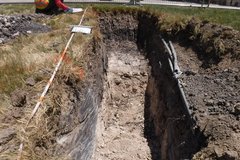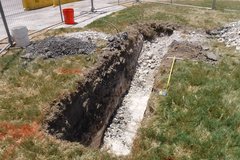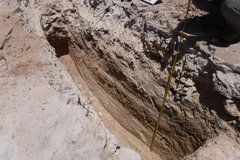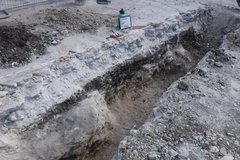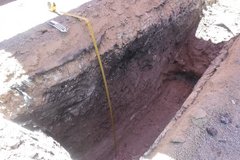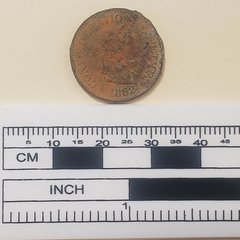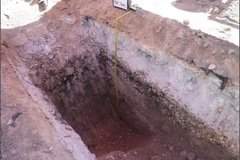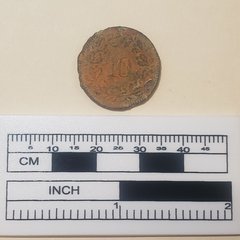Archaeological investigations continued in the Phase 2 Project Area this week. Excavation of five backhoe trenches (#s 9, 10, 5, 6, 4, and 1) was completed. All trenches showed evidence of previous disturbance and no archaeological features, such as structural elements, were encountered.
At the southern end of Plaza de Valero, two trenches (BHTs 9 and 10) were placed in the grassy lawn area. These trenches were oriented east to west and were approximately 13 ft x 3 ft. Excavations terminated at a maximum depth of approximately 4 ft, when a deposit of degraded limestone was encountered across the extent of the trenches (Figures 1 and 2). Artifacts observed in this trench include metal nail fragments, container glass shards, and one white earthenware ceramic sherd.

